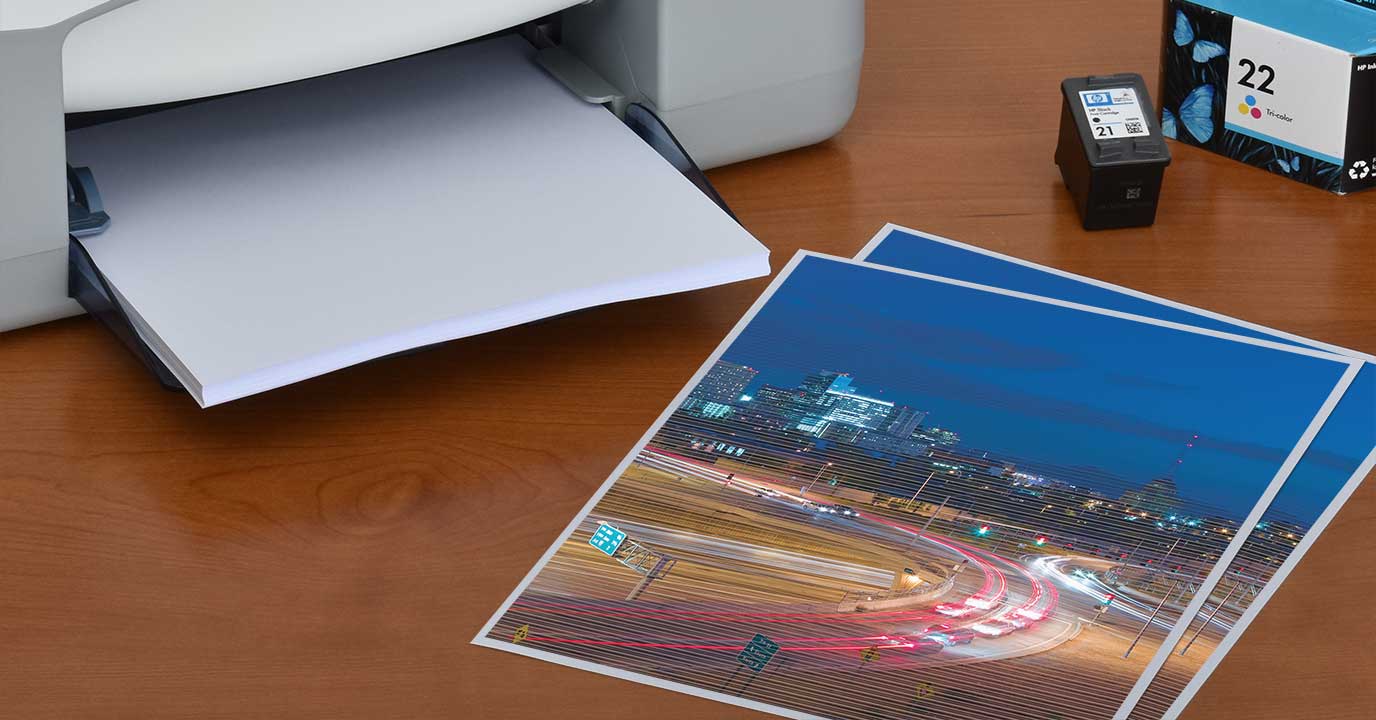 How Can I Fix Lines and White Streaks on My Inkjet Printer? Having difficulty with light streaks or lines of white appearing on your printed photos or documents? Often, a quick step will fix it right up! Ink streaks and faded bands, white streaks, missing colors, and blank lines are some of the most common issues seen with inkjet printers. Usually, these are easy-to-fix problems and you can get back to printing in no time. This topic discusses blank streaks specifically. If you are seeing black or colored lines of ink or smudges on the printed page, keep an eye out for our future article about fixing ink smudges or lines on printed pages or call us for tips. Otherwise, read on! The summary (TL;DR): - Clogged printhead nozzles or low ink levels are the most common cause for blank or light bands
- Use the built-in cleaning cycle or manually clean the printhead
- For vertical blank bands, check for paper or labels blocking the print in specific areas
The most common causes for light / blank areas or missing colors are: - Low ink
- Dried ink in the printhead
- Dirty printhead
- Obstructions between the paper and the print head (when streaks are vertical)
Fixing the Blank Areas: Inkjet printers work by using tiny nozzles to spray microscopic drops of ink onto the page. Sometimes, the ink nozzles get dirty or clogged with dried ink, and in those areas, no ink is displayed on the page. Generally, inkjet printers have different printheads and different nozzles for black and each color, or at least one for black and one for colors. There are a few ways to clean those nozzles and return your print back to its original beauty! - Make sure the issue is in the printer (not the document or the printing software), and find out which printhead needs cleaning.
Sometimes software can cause blank sections of print, for example, when the wrong printer driver is used or when printing a low-resolution picture. To rule this out, many printers support printing a self-test page. How to print this page depends on the model. A quick search for print test page {your printer model} will usually find it quickly. In case automatic cleaning doesn't work, we also need to figure out which printhead or printheads are leaving blank areas. If a black and white document prints ok, but a photo shows the light streaks, the problem will be in the color print head or heads. If photos look ok, but black text shows blank lines, it's probably in the black print head. - Make sure ink cartridges are not low or dried up.
If your ink cartridge is low, it may not be able to deliver enough ink to print evenly. Also, ink cartridges in inkjet printers that don't get used frequently can sometimes dry up. If the cartridges are not fairly new, replacing them may be a good first step. You can always try the later steps first, but keep this one in mind. - Use built-in cleaning functions.
The easiest option is usually the printer's self-cleaning function. Some printers let you start cleanings from the panel, but most use the computer's printer software or driver to kick it off. For example, HP and Brother include their Toolbox software when you install their printers. If you aren't sure where to find them, search for clean printhead {your model} or cleaning cycle {your model}. Sometimes it helps to run the cleaning cycle more than once; but, please note that it can use quite a bit of ink to run the printhead self-cleaning function. - If your printer doesn't have a built-in cleaning function, or if it didn't fix the problem, you can try cleaning your printhead by hand.
Please note that there are two main types of inkjet printheads. Printhead units are cartridges with the "heads" built in, while two-part units have a printhead and a separate ink cartridge for each color. Materials needed: - Cotton swab, clean, lint-free wipe or other cleaning material that will not leave fibers behind
- Filtered or distilled water, or isopropyl alcohol
- Paper or old towels to protect the work surface from ink
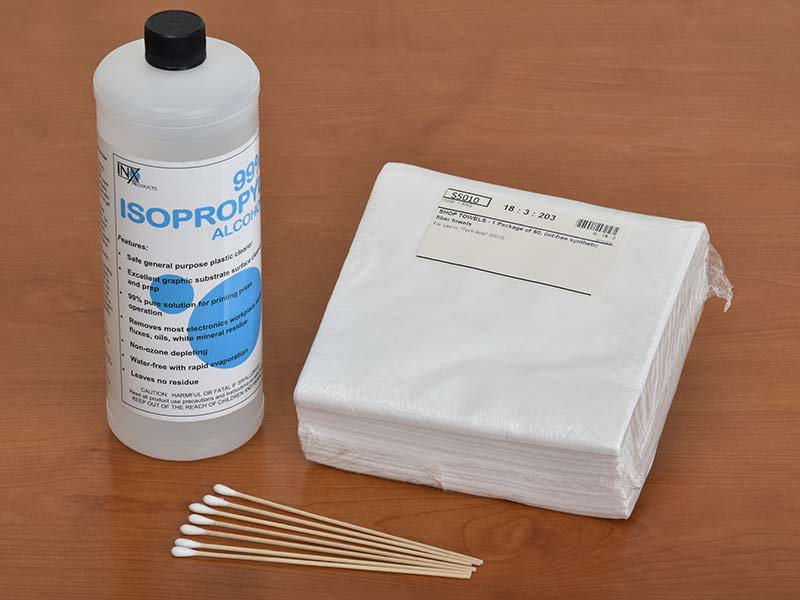 To clean the print head: - Remove the print head from the inkjet printer (see documentation for your printer).
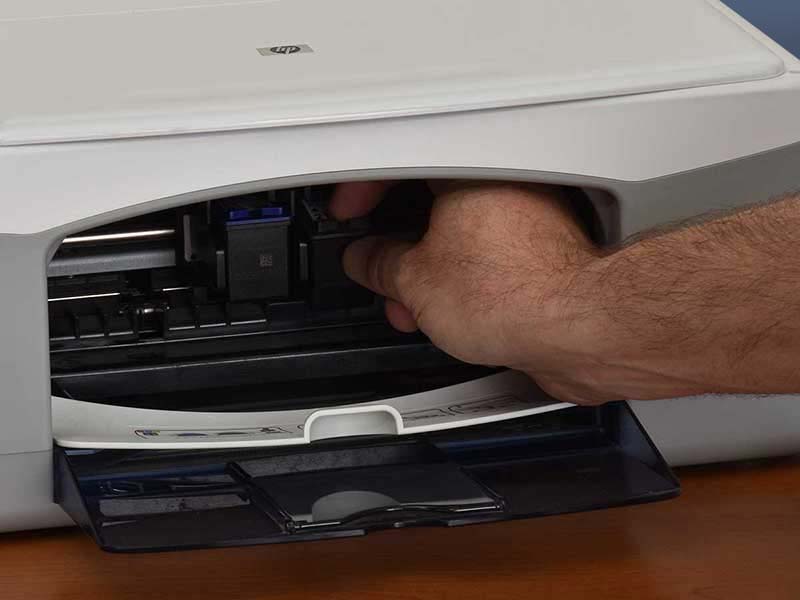 - Rotate the printhead so the nozzles face upward.
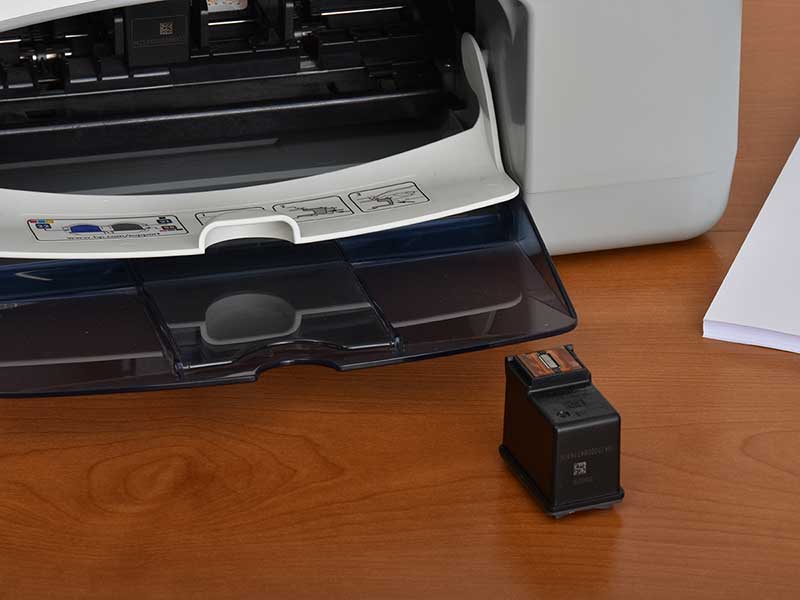 - Dampen the cotton swab with the water or alcohol (should be damp only – squeeze or blot out any excess).
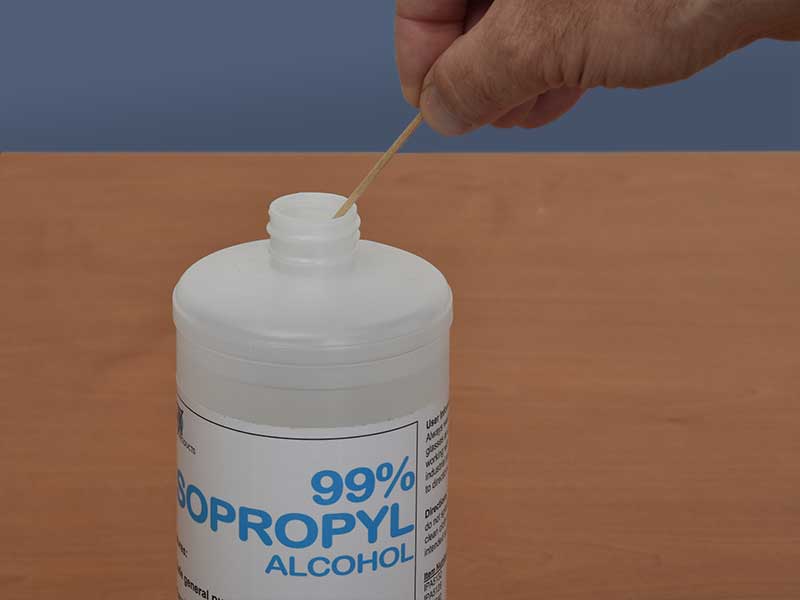 - Gently clean the surface of the print head, removing any dried ink, dirt or fibers.
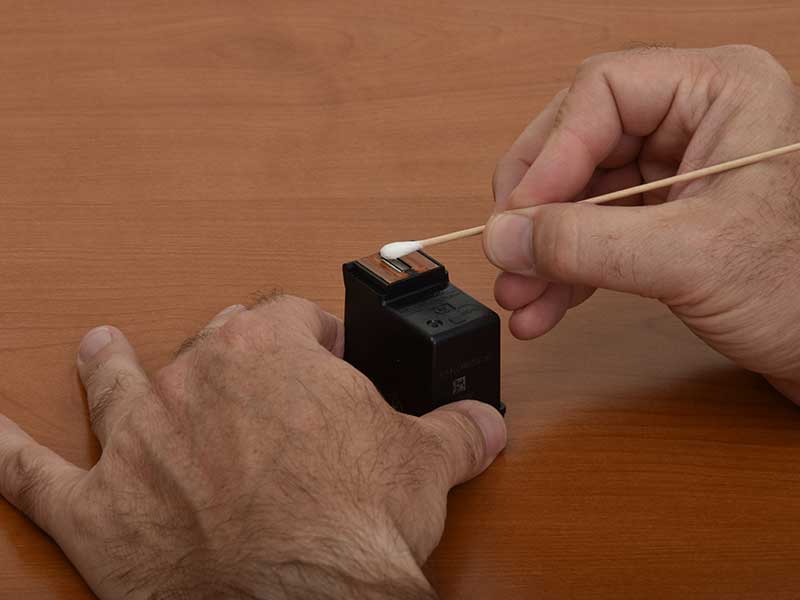 - If any wet ink is left, blot it off with a dry swab or lint-free towel.
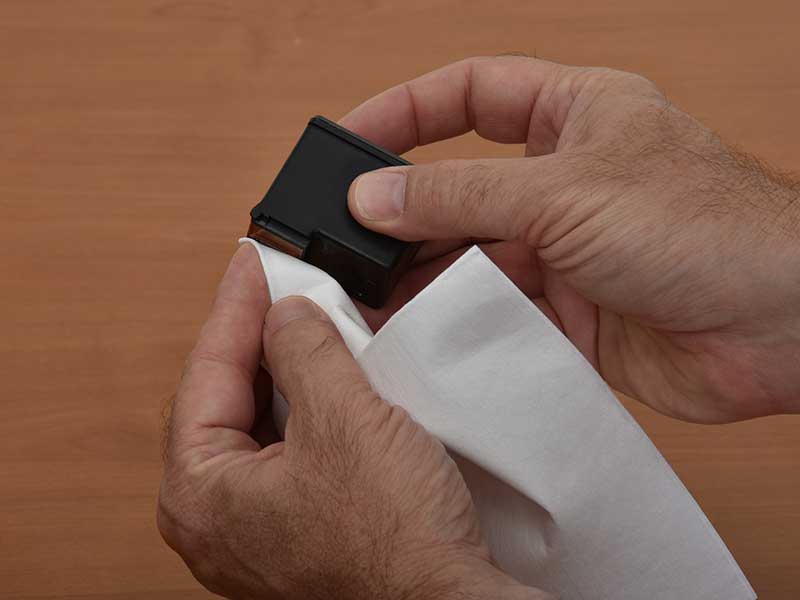 - Repeat steps 1-4 for any other printheads.
- Reinstall all printheads into the printer. For best results, do not leave printheads out of the printer for extended periods to prevent ink from drying in the jets again.
- Print several pages to help the ink begin flowing and to test the print quality.
- If all else fails, replace the printhead or printheads on your printer.
If cleaning doesn't fix the issue, the jets may be too blocked, or the print head itself may be failing. But no worries, your printer can still print high-quality pages for you with a new printhead. Buy one or more printheads to replace the blocked or bad units. Installation is generally easy and fixes the common problems listed above as well as a few less common issues. Long term tips: - Print regularly – print head jets dry out when not used, so printing at least once every few days will help keep them from drying out.
- Run the cleaning tool occasionally (not too frequently, as it can use a lot of ink).
More info: Inkjets are generally less expensive per printed page than laser printers and quality looks similar. However, when inkjets are used infrequently, it's possible for the ink to dry up and need replacement. If this happens, the cost per printed page can actually be a lot more expensive in the long run. Laser printers use a dry powder (toner) that lasts quite a long time, even when not used. If there are long breaks between print jobs, it may be more economical to invest a little more up front and purchase a laser printer. Considering the cost of basic laser printers has come down quite a bit over the last few years, it makes them an even more attractive option. Related links - Learn about inkjet printheads on HowStuffWorks
- Refilling your HP inkjet cartridge with invisible ink
- Canon Printhead FAQ
- Shop for a printhead
- Shop for inkjet ink
Publisher: Precision Roller | |









0 Response to "Can You Replace the Pressure Roller on a Printer"
Post a Comment